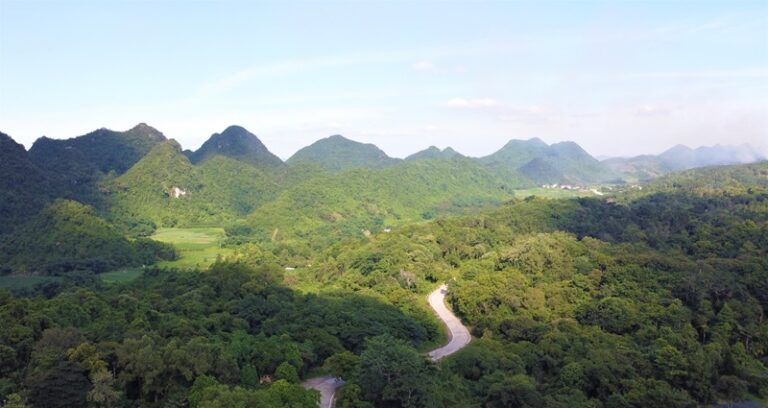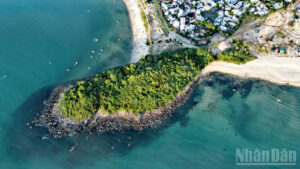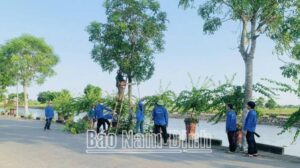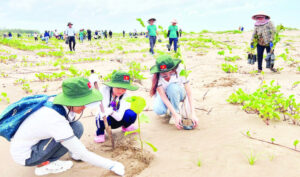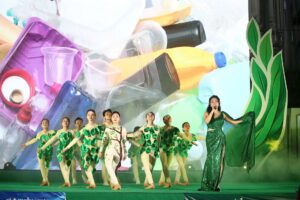From the central coast city of Quy Nhon, the towering cliffs of Yen Island look like a giant dinosaur defending the city from storms and heavy seas.
The picturesque island, which is also called Phuong Mai Peninsula, is famous for its cliffs and caves where birds build the nests used in the much-prized health-giving birds’ nest soup.
To visit the island in Nhon Ly Commune, Quy Nhon City take a two hour boat from the wharf on Tan Islet in Hai Cang Ward. The long journey will be rewarded when you see the caves, ten thousands of years old and stone cliffs rising vertically from the waves. The floors of the caves are large but strewn with rocks making it the perfect place for swallows to make their nests.
Once inside the caves you will be overawed by their size of the interior. The bird nests are everywhere, strung about in chains. The mothers feed their hungry young and fan them with their wings, while the little ones chirp loudly. The sounds of the birds, the dripping of water and the waves below are amazing.
Nguyen Hong Van, director of the management and exploitation board of birds’ nests in Binh Dinh Province, said that there are 30 caves on Yen Island, mainly located in two villages of Nhon Hai and Nhon Ly. In small caves such as Rung Cao, Doi, Ba Nghe, Can and Ham Xe, every year, people collect from 100 to 300 bird nests. For the large caves such as Ca, Doi Trong, Doi Ngoai, Luong and Kho, especially, the caves whose mouths open toward the East or Southeast, that are cool and airy and have fresh water dripping from the ceiling, locals can collect 14,000 to 15,000 bird nests per year.
In spring when the weather becomes warmer, visitors can see flocks of birds filling the sky. To take the nests from the walls of the cliff and from the cave ceilings, people build bamboo scaffolds often using them like bridges. Some caves are very high so that people use up to 300 lengths of bamboo to make each scaffold that may be five lengths of bamboo tall to reach the ceiling. The way to take the nest is very meticulous. For a nest that is out of reach, people use a stick with a nail on the top for a hook. In the dry weather, before taking the nests, the locals inject water into it to soften it and avoid it breaking.
The harvest season starts from April in the lunar calendar as the breeding season is lunar January and February. In lunar April they take the first harvest. The second harvest starts when the nestlings become strong enough to fly. People can collect a few nests in the third harvest stage which has the best quality nests.
The island also has many historical and cultural relics dating from the Cham era to Nguyen Dynasty such as Phat Loi Pagoda with its mysterious Cham statue, Tam Hoa Mountain, the site of Tay Son troop’s glorious victory in the eighteen century and Ho Ky Fortress.








